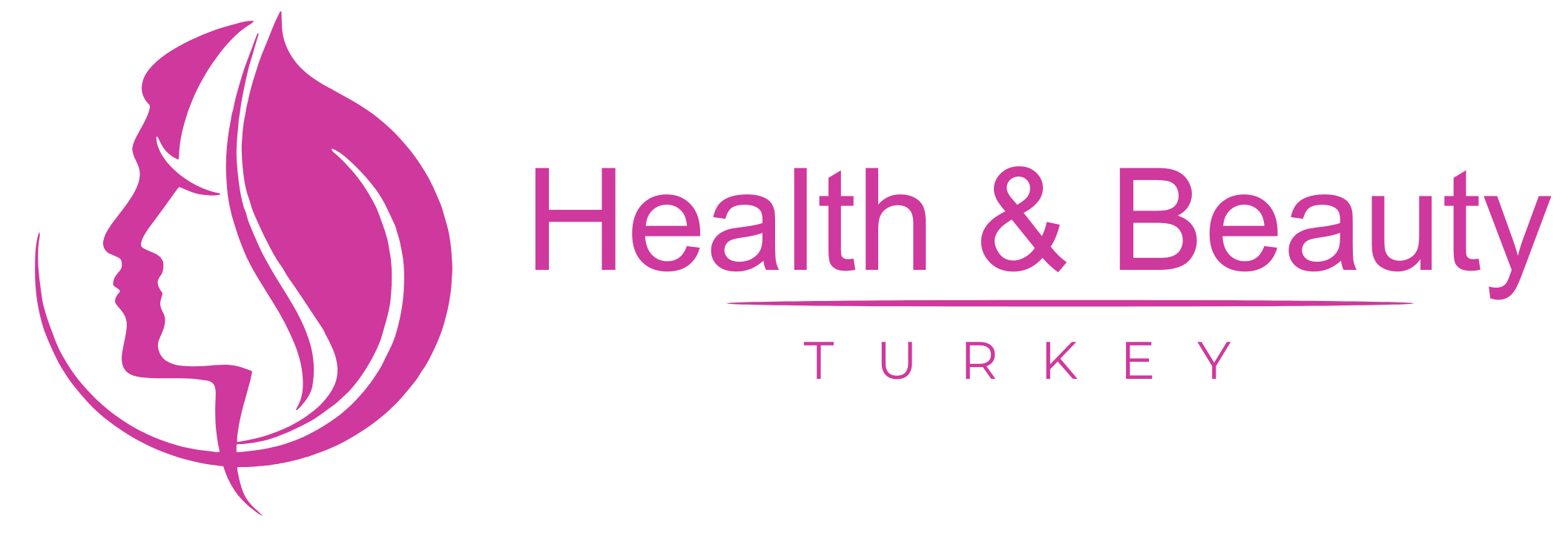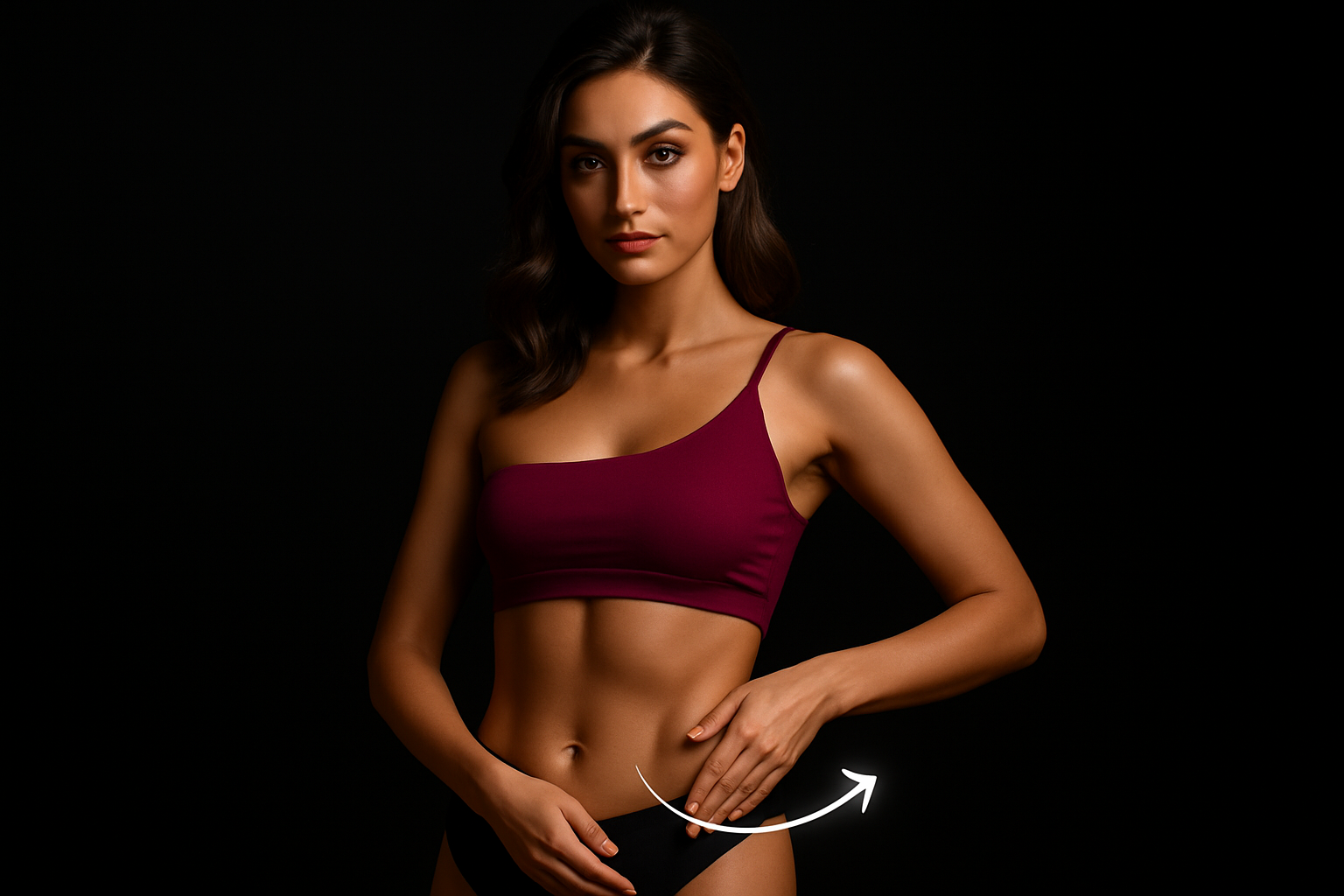Regain Your Fitness: 3 Effective Ways to Restore the Appearance of Abdominal Muscles After Childbirth in Turkey
Motherhood is a wonderful and transformative journey. Among the physical changes a woman may experience after childbirth, her interest in restoring the strength and beauty of her abdominal muscles stands out.
Abdominal sagging, loss of strength, and separation are common challenges many women face, sometimes affecting their self-confidence.
At ‘Health & Beauty Turkey,’ we fully understand these feelings and strive to offer the latest medical and surgical solutions to help mothers regain their attractive appearance and self-confidence.
Turkey, with its rich history of providing distinguished medical services, has become a leading global destination in cosmetic surgery, especially in body treatments and tummy tucks.
We understand that traveling for surgery may raise some concerns, especially regarding potential complications.
For this reason, at ‘Health & Beauty Turkey,’ we prioritize our patients’ safety and comfort. We offer them ‘Health Tourism Complication Insurance,’ providing complete peace of mind. This insurance covers inpatient treatment for six months, including accommodation and travel costs if revision surgery is needed, at clinics accredited by the Turkish Ministry of Health.
Understanding Abdominal Muscles: A Journey from Strength to Postpartum Changes
Abdominal muscles, or what is known as the abdominal wall, are a group of strong muscles that form the front of the torso.
These muscles play a vital role in many essential functions, including:
- Postural Support: They help maintain an upright body and strengthen the spine.
- Movement: They contribute to bending and twisting the torso, facilitating walking, running, and daily activities.
- Protection of Internal Organs: They form a protective barrier for the organs in the abdomen.
- Respiration: They participate in the exhalation process.
- Pregnancy Support: They play a crucial role in supporting fetal growth during pregnancy.
Reasons for Changes in Abdominal Muscles After Childbirth:
Abdominal muscles are subjected to immense pressure during pregnancy, leading to stretching and, in some cases, separation.
The main reasons for changes in the appearance of abdominal muscles after childbirth include:
1. Diastasis Recti (Abdominal Muscle Separation):
- Causes: As the uterus grows, the rectus abdominis muscles stretch significantly, pushing them apart along the linea alba in the midline of the abdomen.
- This separation is a very common condition, with studies indicating it can affect up to one-third of women postpartum.
- Risk Factors: Multiple pregnancies, pregnancy at an advanced age, carrying twins or more, excessive weight gain during pregnancy, fetal position, and general abdominal muscle strength before pregnancy.
- Symptoms: Persistent abdominal protrusion even after weight loss, lower back weakness, lower back pain, digestive issues (constipation, bloating), difficulty performing abdominal exercises, and a “cone-like” bulge in the mid-abdomen when straining (e.g., getting out of bed).
- Diagnosis: Diagnosis is typically made through a clinical examination by a doctor, measuring the width and depth of the separation. The doctor may use imaging techniques like ultrasound or MRI to confirm the diagnosis and determine the severity of the separation, especially in complex cases.
2. Accumulation of Excess Fat:
- Causes: During pregnancy, the body accumulates fat reserves to support the pregnancy and care for the baby postpartum.
- This fat may not disappear on its own after childbirth, especially around the abdomen, leading to a sagging appearance.
- Risk Factors: Genetic factors, unhealthy diet, lack of physical activity, hormonal changes.
3. Excessive Skin Laxity:
- Causes: With prolonged stretching of the skin during pregnancy, it may lose its elasticity and ability to retract fully after childbirth, resulting in excess and sagging skin in the abdominal area.
- Risk Factors: Multiple pregnancies, carrying twins, significant weight gain during pregnancy, age (skin elasticity decreases with age), genetics.
Recent Research Updates:
The field of postpartum abdominal muscle restoration is continuously evolving.
Recent research focuses on:
- Deeper understanding of diastasis recti: Studying the biomechanical and hormonal factors contributing to separation, and identifying indicators for predicting response to non-surgical treatment.
- Advanced rehabilitation techniques: Developing customized physical therapy programs targeting the strengthening of deep core muscles (like the transverse abdominis) and improving motor coordination, with a focus on evidence-based methods.
- Minimally invasive surgical techniques: Exploring surgical methods that achieve effective results with minimal intervention, reducing recovery time and surgical scarring.
- The role of non-surgical treatments: Evaluating the effectiveness of modern techniques like High-Intensity Focused Ultrasound (HIFU) and Electrical Muscle Stimulation (EMS) in improving abdominal muscle strength and tone.
Ideal Candidates for Treatment Procedures
Eligibility requirements for abdominal muscle restoration treatments vary depending on the type of treatment.
For Non-Surgical Treatments (e.g., physical therapy, certain cosmetic techniques):
Candidates:
- Women experiencing mild to moderate abdominal muscle separation.
- Women with mild to moderate excess skin.
- Mothers who wish to avoid surgery and prefer non-invasive solutions.
- Women with realistic expectations about the results.
- Women able to commit to physical therapy programs or treatment sessions.
Non-Candidates:
- Women with severe abdominal muscle separation and significant skin laxity.
- Women with specific medical conditions that contraindicate these treatments.
- Women unable to commit to the necessary treatment sessions or exercises.
For Surgical Procedures (e.g., tummy tuck):
Candidates:
- Women experiencing severe abdominal muscle separation with noticeable skin laxity.
- Women with a protruding and sagging abdomen resulting from childbirth.
- Mothers who have completed childbearing and desire permanent results.
- Women in good general health, without serious chronic illnesses.
- Women with a relatively stable weight and no plans for significant weight fluctuations in the near future.
- Women with realistic expectations about their post-surgical abdominal appearance.
Non-Candidates:
- Women who are pregnant or planning to become pregnant in the near future.
- Women with severe obesity.
- Women with a history of blood clotting issues or compromised immunity.
- Active smokers (quitting smoking well in advance of surgery is advised).
- Women with unstable chronic conditions (e.g., heart disease or uncontrolled diabetes).
Preparing for the Treatment Procedure: A Step Towards a Successful Journey
Regardless of the treatment you choose, good preparation plays a crucial role in ensuring optimal results and minimizing risks.
Before Traveling to Turkey (Especially for Surgical Procedures):
-
Initial Medical Consultation:
- Contacting ‘Health & Beauty Turkey’ to provide a detailed medical history, clear photos of the abdominal area, and to address any inquiries.
- Our medical team will assess your condition and recommend the best available treatment options.
-
Medical Examinations:
- You will be provided with a list of essential medical tests to be done in your home country before traveling (e.g., blood tests, ECG) or upon arrival in Turkey.
- These examinations are necessary to assess your suitability for the procedure and ensure your safety.
-
Health Advice:
- Healthy Nutrition: Follow a balanced diet rich in protein, vitamins, and minerals to support the healing process.
- Hydration: Drink adequate amounts of water.
- Rest: Get sufficient sleep.
-
Lifestyle Adjustments:
- Quitting Smoking: If you are a smoker, it is advised to quit smoking weeks or months before surgery, as smoking negatively affects wound healing and circulation.
- Avoiding Certain Medications: You may be asked to avoid certain medications or supplements that increase blood thinning (e.g., aspirin, some vitamins) before surgery. Your doctor will provide a detailed list.
- Psychological Preparation: Discuss your concerns and expectations with your partner or friends.
Upon Arrival in Turkey:
-
Final Consultation with the Surgeon:
- Before the procedure, you will have a detailed consultation with your surgeon in Turkey.
- They will reassess your condition, explain the procedure details, answer all your questions, and finalize the treatment plan.
- The most suitable surgical technique will be determined (e.g., full tummy tuck, mini tummy tuck, or a combination of tummy tuck and muscle repair).
-
Anesthesia Options:
- The anesthesiologist will discuss available anesthesia options with you (general anesthesia or local with IV sedation) and choose the most suitable one based on the procedure type and your health status.
Before the Surgery
Medical Consultation: As mentioned, a review of medical history, physical examination, goal setting, and explanation of risks and benefits are conducted.
Photographic Documentation: The doctor may take before-and-after photos of the abdominal area to document the condition and compare it with post-operative results.
Markings: The surgeon marks the lines and areas to be operated on.
Preparation: Wearing loose and comfortable clothing.
During the Surgery
The details of the procedure depend on the method used:
1. Diastasis Recti Repair (Abdominoplasty / Tummy Tuck) and Abdominoplasty Surgeries:
- Surgical Technique:
- Surgical Incision: The surgeon makes a horizontal incision in the lower abdomen, usually hidden above the bikini line, extending from side to side. The length of the incision depends on the amount of excess skin to be removed.
- Separation of Skin and Muscles: The skin and fatty tissue are lifted over the abdominal muscles to expose them.
- Muscle Repair: In cases of abdominal muscle separation, the surgeon sutures the muscles together in the midline (linea alba), restoring their strength and tightening the abdominal wall. This step is crucial for repairing abdominal weakness resulting from pregnancy.
- Excess Skin Removal: The upper abdominal skin is pulled down, and excess skin and sagging fat are removed.
- Umbilicus Repositioning: The navel may need reshaping or repositioning to match the new abdominal contour.
- Closure of Incisions: Surgical incisions are closed with fine sutures, often dissolvable, and drains are placed to remove accumulated fluid.
- Dressings and Compression Garments: The area is covered with sterile dressings, and a custom-made abdominal binder or compression garment is worn to support the area and reduce swelling.
Advanced Techniques in Turkey:
- Mini Tummy Tuck: Suitable for cases where excess skin is concentrated below the navel, not requiring navel repositioning. The incision is shorter.
- Lipoabdominoplasty: Combines tummy tuck with liposuction from the abdomen’s flanks or back for better body contouring.
- Laparoscopic Techniques: In some cases, minimally invasive techniques can be used to aid in muscle assessment and repair.
- Laser and Radiofrequency Techniques: May be used to help tighten the skin and minimize scarring.
2. Non-Surgical Treatments:
- Guided Physical Therapy:
- Focus: Targets strengthening the Transversus Abdominis muscle, the deep muscle that acts as the body’s natural corset.
- Techniques: Deep breathing exercises, “drawing-in” maneuvers, pelvic exercises, and safe, appropriate core strengthening exercises.
- Application: Performed under the supervision of a physical therapist and requires regular commitment.
- Non-Surgical Cosmetic Techniques:
- High-Intensity Focused Ultrasound (HIFU): Uses ultrasound energy to target deep layers of the skin and muscles, stimulating collagen production and helping to tighten tissues.
- Radiofrequency (RF): Works by heating skin layers to stimulate collagen production and tighten lax skin.
- Electrical Muscle Stimulation (EMS): Techniques using electrical pulses to stimulate muscle contractions, which may help strengthen muscles and improve their tone.
- Applications: These techniques are generally safe and require multiple sessions for desired results, suitable for mild to moderate cases of skin laxity and muscle weakness.
After the Surgery and Recovery Period
Post-anesthesia Monitoring: The patient is transferred to the recovery room for vital sign monitoring.
Drain Removal: Drains are usually removed after one or two days, depending on the amount of fluid drained.
Pain Management: Pain relievers are prescribed to manage any discomfort.
Early Mobilization: Short walks are recommended to improve circulation and reduce the risk of blood clots.
Wearing Compression Garments: The compression garment should be worn continuously as directed by the doctor.
Wound Care: Instructions on how to care for wounds and keep them clean and dry.
Medical Follow-up: A follow-up appointment with the surgeon after a short period (usually one to two weeks) to remove sutures (if not dissolvable) and assess healing.
Recovery Period:
- First Week: The most intensive recovery period. Fatigue, swelling, and bruising are normal. Avoid lifting heavy objects and bending forcefully.
- Weeks 2-4: Swelling and bruising begin to subside. Most light daily activities can be gradually resumed. Compression garments may be allowed off for short periods.
- Months 1-3: Continuous improvement in shape and reduction of swelling. Light exercises may be initiated under medical supervision. Most scars gradually fade.
- 6 Months to 1 Year: Final results of the surgery become clearly visible as tissues stabilize.
When to Expect Results?
- Immediate Results: You will notice a significant improvement in abdominal appearance immediately after the surgery, but swelling will be present.
- Initial Results: Within a few weeks, as swelling subsides, the new abdominal contour will start to emerge.
- Final Results: It may take 6 months to a full year to see the ultimate final results, as tissues continue to settle and scars fade.
Modern Treatment Options in Turkey
Turkey is distinguished by offering the latest medical and surgical technologies, focusing on:
- Advanced Tummy Tuck Techniques: Utilizing surgical methods that minimize scarring, accelerate healing, and achieve natural results.
- Combination Treatments: Combining tummy tuck with liposuction for integrated body sculpting.
- Innovative Non-Surgical Techniques: Offering the latest non-surgical devices and technologies for skin tightening and muscle strengthening.
- Digital Technology: Employing 3D simulation technologies to help patients visualize expected outcomes.
Addressing Patient Concerns: Your Safety is Our Top Priority
We fully understand that deciding to undergo surgery can be accompanied by anxiety about potential risks and complications, especially with procedures like a tummy tuck.
At ‘Health & Beauty Turkey,’ we believe in complete transparency and place your safety at the forefront of our priorities.
Health Tourism Complication Insurance:
To enhance your sense of security and peace of mind, we offer our patients ‘Health Tourism Complication Insurance.’ This insurance provides a comprehensive safety net covering:
- Inpatient Treatment: This insurance covers the costs of treatment and medical care in case of any complications requiring hospitalization after surgery.
- Coverage Period: The insurance remains valid for a full six months after the procedure, giving you ample time for complete recovery with peace of mind.
- Travel and Accommodation Coverage: If revision surgery or treatment for complications is necessary, the insurance also covers travel and accommodation costs required to return to Turkey for treatment completion.
- Facility Accreditation: This insurance ensures that treatment will be provided in clinics and hospitals accredited by the Turkish Ministry of Health, confirming our commitment to the highest standards of quality and care.
With this insurance, you can focus on your recovery journey and enjoy the results, knowing you are in safe and supported hands.
Practical Tips for Patients: A Comfortable Treatment Journey
1. Travel Tips:
- Advance Booking: Book flights and hotels in advance, especially if traveling during peak season.
- Visa: Check visa requirements for entering Turkey and apply early.
- Currency: Exchange some local currency upon arrival or use credit cards.
- Transportation: Utilize our provided transportation services for easy transfers between the airport, hotel, and clinic.
- Communication: Keep emergency phone numbers and our medical team’s contact information handy.
2. Psychological Preparation:
- Communication: Talk to your family and friends about your concerns and expectations.
- Research: Read about the procedure, but avoid misinformation and focus on reliable sources.
- Realism: Set realistic expectations regarding results and recovery time.
- Relaxation: Try to relax and enjoy your experience in Turkey.
3. Post-Treatment Tips:
- Follow Doctor’s Instructions Precisely: Adhere strictly to wound care instructions, medication schedules, and compression garment usage.
- Diet: Consume a healthy and balanced diet to support the healing process.
- Physical Activity: Gradually begin light activities, avoiding strenuous exertion until cleared by your doctor.
- Scar Care: Follow the doctor’s recommendations for scar care to help minimize their appearance.
- Patience: Remember that final results take time to materialize.
Cost of Restoring Abdominal Muscles After Childbirth in Turkey
The cost of postpartum abdominal muscle restoration treatments in Turkey varies significantly depending on the chosen procedure, complexity of the case, surgeon’s experience, and the hospital or clinic where the treatment is performed.
- Physical Therapy and Rehabilitation: The cost of a physical therapy program can range from a few hundred to approximately two thousand Euros, depending on the number and duration of sessions.
- Non-Surgical Cosmetic Techniques (e.g., HIFU, RF): A single session typically costs between 200 and 600 Euros. Multiple sessions may be required for desired results, making the total cost range from 1000 to 4000 Euros.
- Tummy Tuck Surgery (Abdominoplasty): Surgery is generally the most expensive option but offers the most durable and significant results. The average price for a full tummy tuck in Turkey ranges between 3000 and 6000 Euros. This cost may include surgeon’s fees, anesthesia fees, hospital charges, and medications. If combined with liposuction, the cost may increase.
Important Note: These prices are approximate averages and may vary.
For an accurate, personalized estimate, it is highly recommended to contact ‘Health & Beauty Turkey’ for a free consultation and comprehensive assessment.
Why Choose ‘Health & Beauty Turkey’?
- Expertise and Professionalism: Our team includes top-tier surgeons and specialists with high qualifications and extensive experience in cosmetic surgery.
- Integrated Care: We provide comprehensive services from your arrival in Turkey until your departure, including airport reception, comfortable hotel accommodation, and meticulous medical follow-up.
- Safety and Trust: We adhere to international quality and safety standards, supported by ‘Health Tourism Complication Insurance’ for your complete peace of mind.
- Advanced Technology: We utilize the latest technologies and equipment to ensure optimal results with minimal intervention.
- Affordable Pricing: We offer treatment packages at highly competitive prices while maintaining the highest quality standards.
Restoring the strength and beauty of your abdominal muscles after childbirth is an achievable goal, and Turkey, with its distinguished experts and modern technologies, is your ideal destination to achieve it. At ‘Health & Beauty Turkey,’ we combine medical expertise, comprehensive care, and a commitment to your safety to ensure you have the best treatment experience and results that exceed your expectations.
Don’t let postpartum physical changes affect your self-confidence. Regain your vitality and fitness with the advanced options we offer, with complete peace of mind thanks to our comprehensive insurance.
Are you ready to take the first step towards reclaiming your ideal physique?
Contact our medical representative today for a free, personalized consultation.
Call us now and let us assist you on your journey to radiance and beauty.




